 Download the original 2pp product sheets for the 1978 ADR E900 and E950 equalizers:
Download the original 2pp product sheets for the 1978 ADR E900 and E950 equalizers:
DOWNLOAD: ADR_Eqs_1978
Last ADR thing for a while, I promise. OK Discuss amongst yrselves…
 Download the original 2pp product sheets for the 1978 ADR E900 and E950 equalizers:
Download the original 2pp product sheets for the 1978 ADR E900 and E950 equalizers:
DOWNLOAD: ADR_Eqs_1978
Last ADR thing for a while, I promise. OK Discuss amongst yrselves…
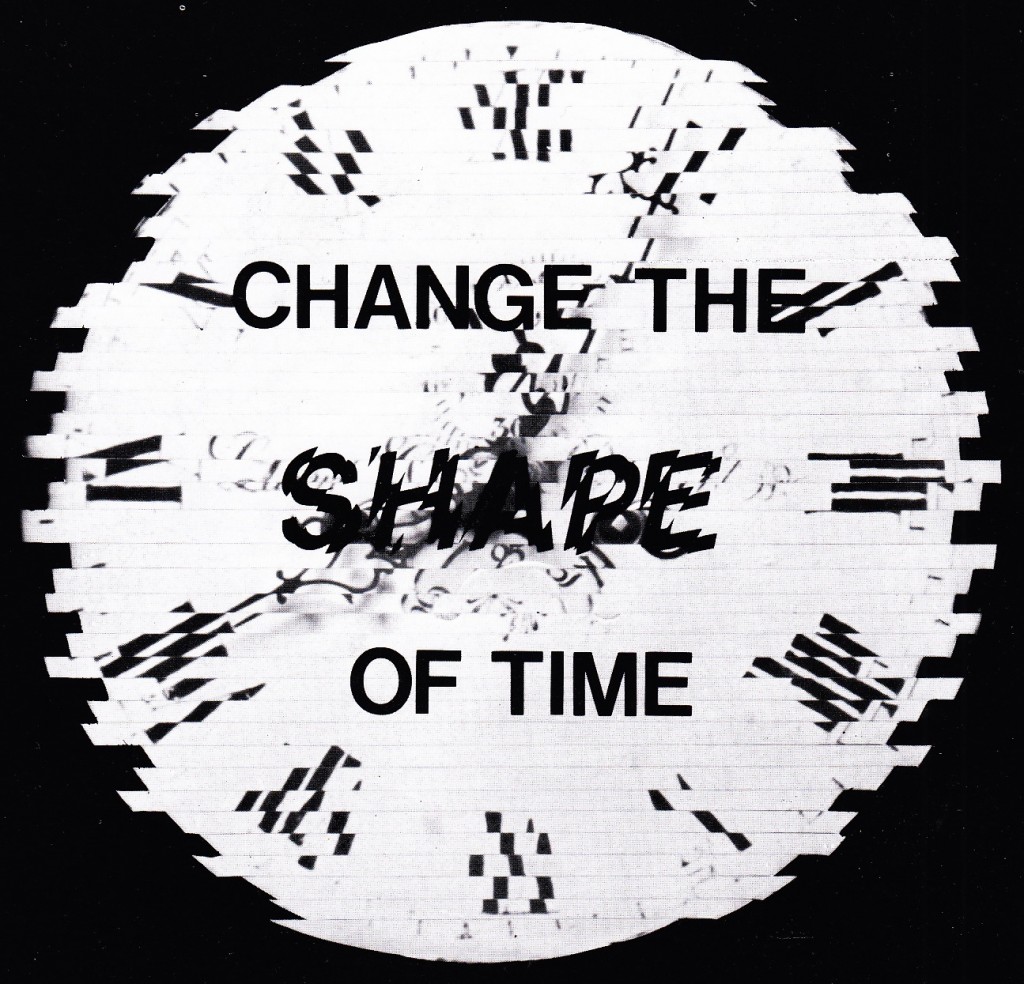 Download the original 4pp catalog for the ADR ‘TimeShape” effects module:
Download the original 4pp catalog for the ADR ‘TimeShape” effects module:
Pretty neat little unit that I’d been unaware of… basically a flanger with an inline limiter and an envelope follower.
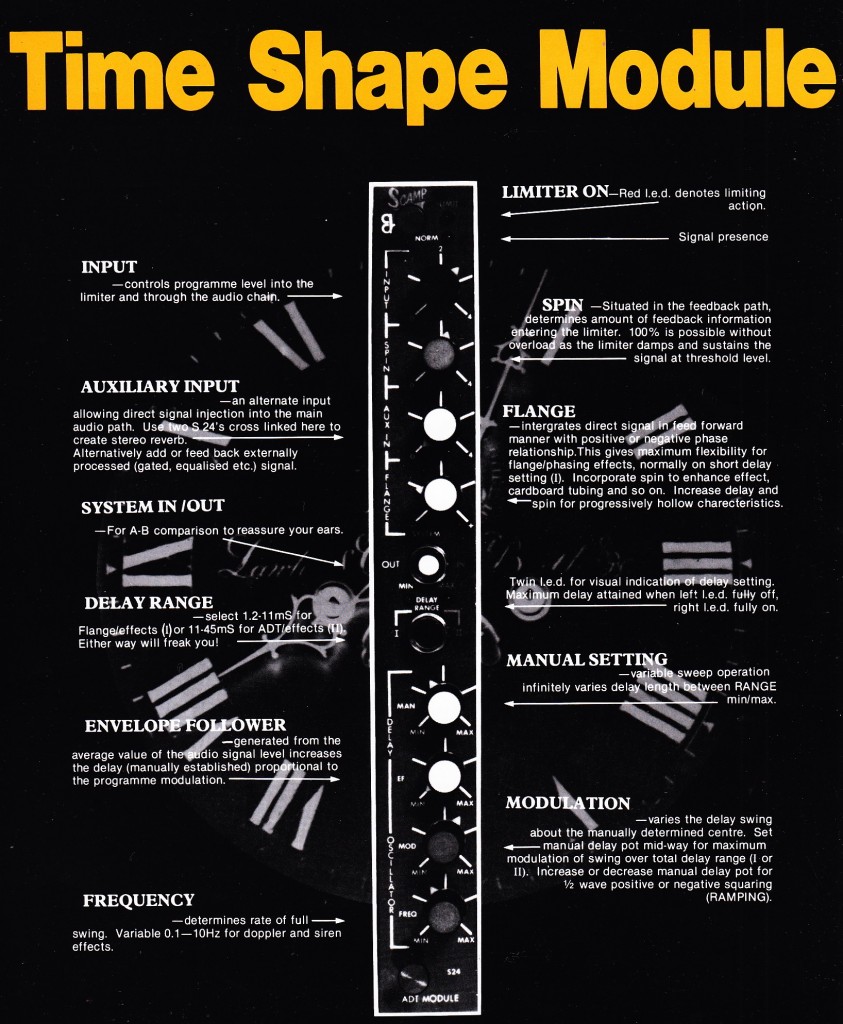 For info on the rest of the ADR Scamp series, click here…
For info on the rest of the ADR Scamp series, click here…
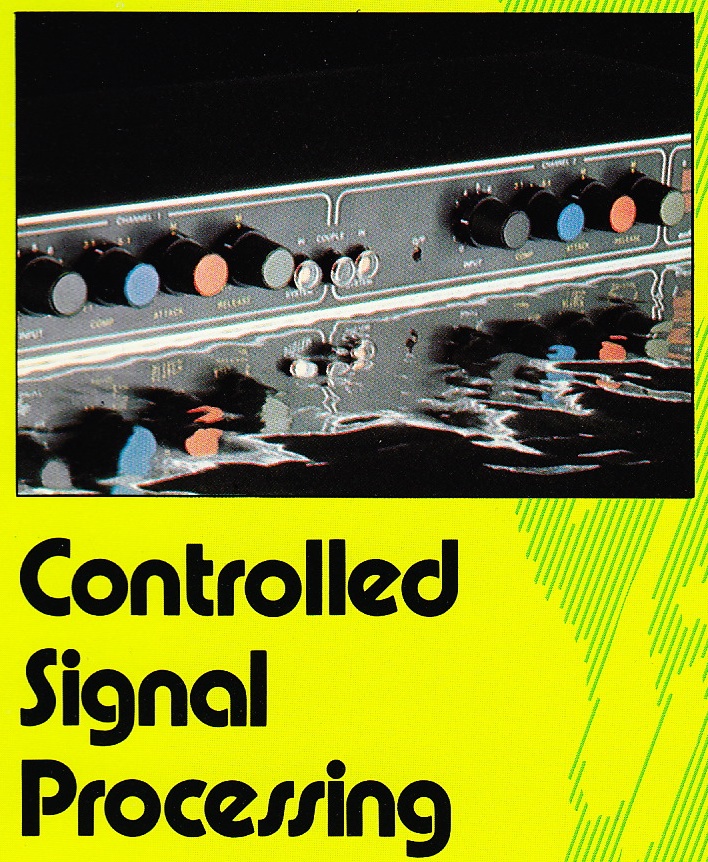 I was recently given hundreds of pages of Audio & Design (Recording) ltd. (hf. ADR) literature from the 1970s, and I’ll be uploading it over the course of… my lifetime, I suppose. Anyhow, here’s a package of original data sheets ETC on their rack-mount compressors of the era:
I was recently given hundreds of pages of Audio & Design (Recording) ltd. (hf. ADR) literature from the 1970s, and I’ll be uploading it over the course of… my lifetime, I suppose. Anyhow, here’s a package of original data sheets ETC on their rack-mount compressors of the era:
DOWNLOAD: ADR_comps_1979
AND – BONUS – a period essay regarding compressor-usage by founder M. Beville: Beville_ADR_Comps_77
Products covered, with text, specs, and images, include: ADR Gemini Compact (their ‘prosumer’ unit), Gemini East Rider, F690 ducking limiter, Compex compressor / expander, F600 broadcast limiter, FM Stereo Ex-press limiter, and Transdynamic processor.




 We previously featured ADR’s ‘Scamp’ series of modular processors from the same era.. click here for that jazz…
We previously featured ADR’s ‘Scamp’ series of modular processors from the same era.. click here for that jazz…
 I am v v pleased to announce that PSV #004 is now online. “The 4-track in 2013” looks at the possibilities that an old-school cassette 4-track machine offers when used in conjunction with a digital audio workstation. We do this through the work of John Panos, aka KINGS. Panos’ music is some of the best new stuff I’ve heard in a while, and he has some really insightful things to say about tape noise and distortion and how these things work as both an arrangement element and a sonic frame, situating parts of the track within an historical context informed by the legacy of cassette-distributed popular music. Check it.
I am v v pleased to announce that PSV #004 is now online. “The 4-track in 2013” looks at the possibilities that an old-school cassette 4-track machine offers when used in conjunction with a digital audio workstation. We do this through the work of John Panos, aka KINGS. Panos’ music is some of the best new stuff I’ve heard in a while, and he has some really insightful things to say about tape noise and distortion and how these things work as both an arrangement element and a sonic frame, situating parts of the track within an historical context informed by the legacy of cassette-distributed popular music. Check it.
For more about KINGS, check out:
KINGS website / Blog / Music / Twitter
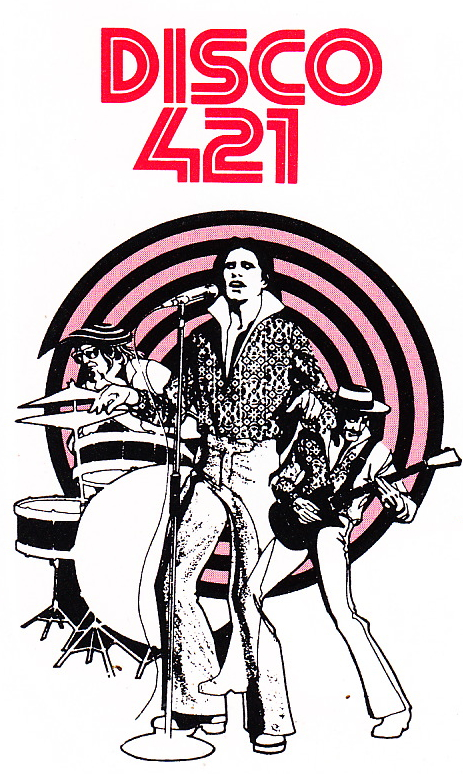 DISCO 421: Capturing the feeling that you get exactly one minute after four-twenty, all my dank-bros. Yes this is an image intended to sell audio mixers. Download the original sales-fliers for the RUSSCO Disco 421, Studio Master 505 and Studio Master 505S:
DISCO 421: Capturing the feeling that you get exactly one minute after four-twenty, all my dank-bros. Yes this is an image intended to sell audio mixers. Download the original sales-fliers for the RUSSCO Disco 421, Studio Master 505 and Studio Master 505S:
DOWNLOAD: Russco_Mixers_1981
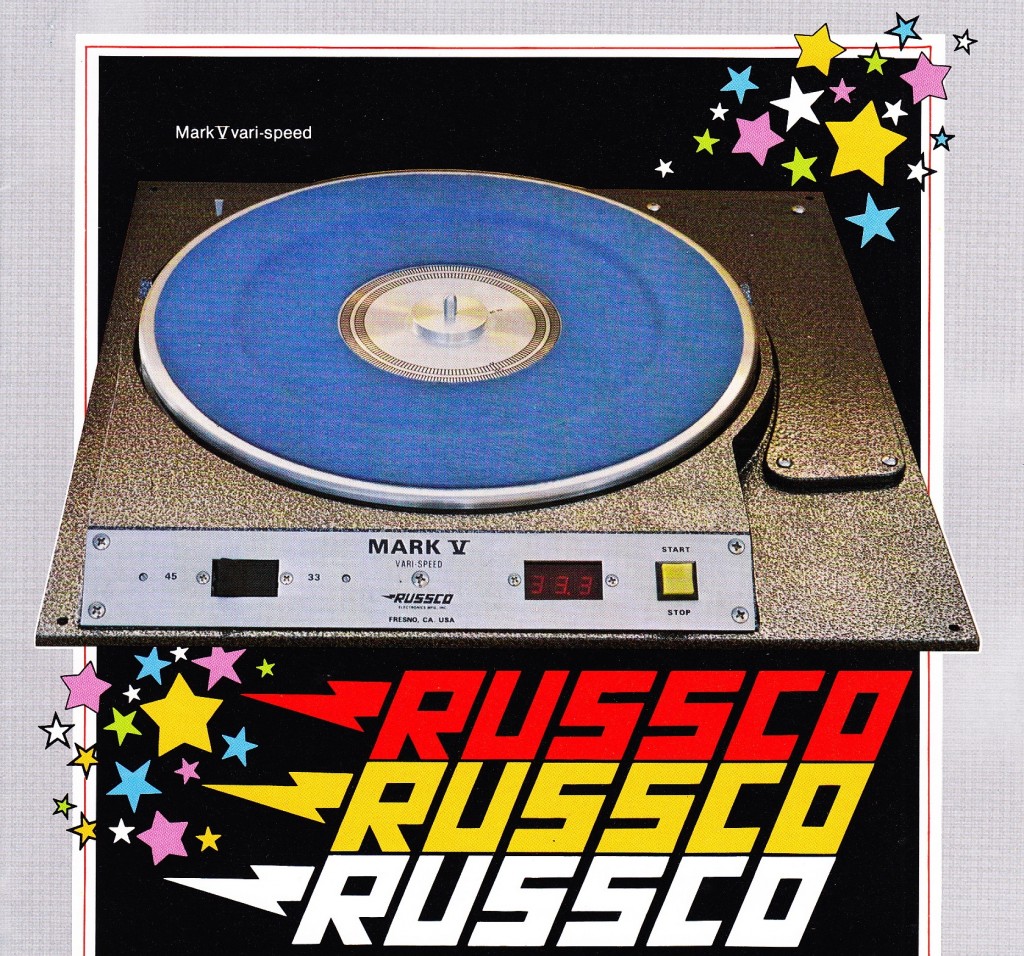 Download the catalogs for the RUSSCO Mark V, Studio Pro, and Cue Master broadcast turntables, as well as their RTA-12 tonearm and a period pricelist:
Download the catalogs for the RUSSCO Mark V, Studio Pro, and Cue Master broadcast turntables, as well as their RTA-12 tonearm and a period pricelist:
DOWNLOAD: Russco_TTs_1981
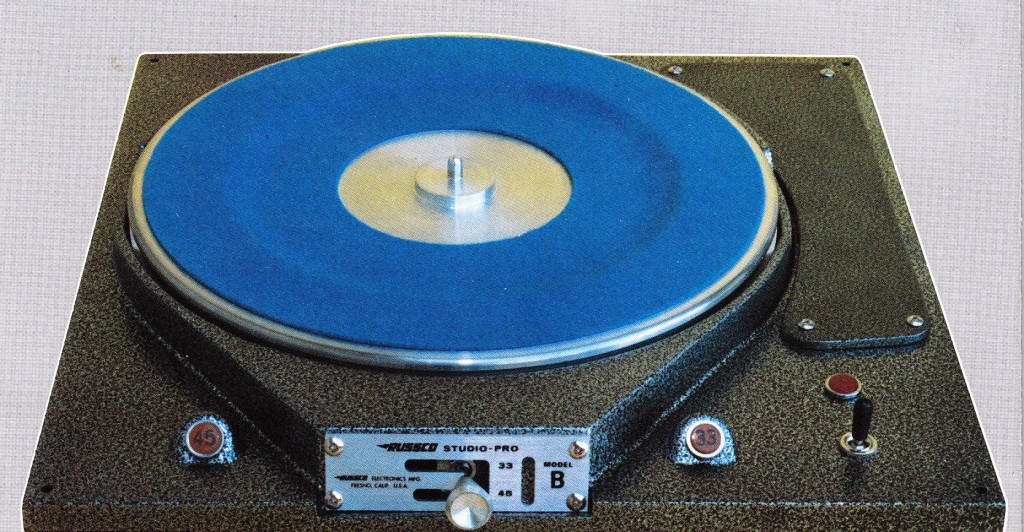 Since we featured Technics broadcast turntables last week on PS dot com, I thought it would be interesting to see what their competition was at the time. I’ve only ever done work at two radio stations and both used Technics, so I know zilch about these Russcos. Anyone? I will say this: they do have a slightly unsavory quality to them; something about the overall design has a sort of carnival-ride aspect, the extruded chassis sharing the stillborn quality of a bumper-car attempting to evoke a Corvette. I can practically smell funnelcake when I look at these things.
Since we featured Technics broadcast turntables last week on PS dot com, I thought it would be interesting to see what their competition was at the time. I’ve only ever done work at two radio stations and both used Technics, so I know zilch about these Russcos. Anyone? I will say this: they do have a slightly unsavory quality to them; something about the overall design has a sort of carnival-ride aspect, the extruded chassis sharing the stillborn quality of a bumper-car attempting to evoke a Corvette. I can practically smell funnelcake when I look at these things.
Anyhow. Coming up next: RUSSCO mixers of the same period.
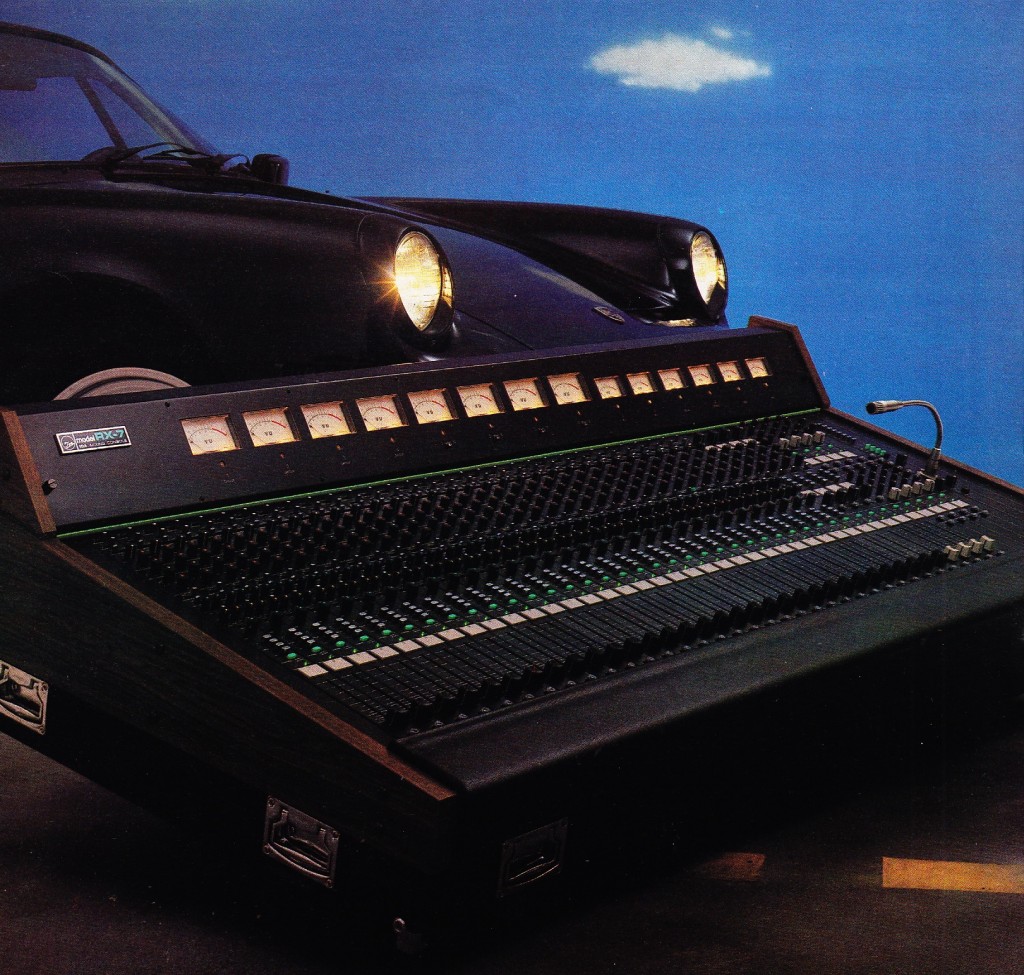 Just stick a Porsche next to pretty much anything
Just stick a Porsche next to pretty much anything
 In Hartley Peavey’s imaginarium, everything is made of Peaveys. Kinda like BEING JOHN MALKOVICH, but with amps.
In Hartley Peavey’s imaginarium, everything is made of Peaveys. Kinda like BEING JOHN MALKOVICH, but with amps.
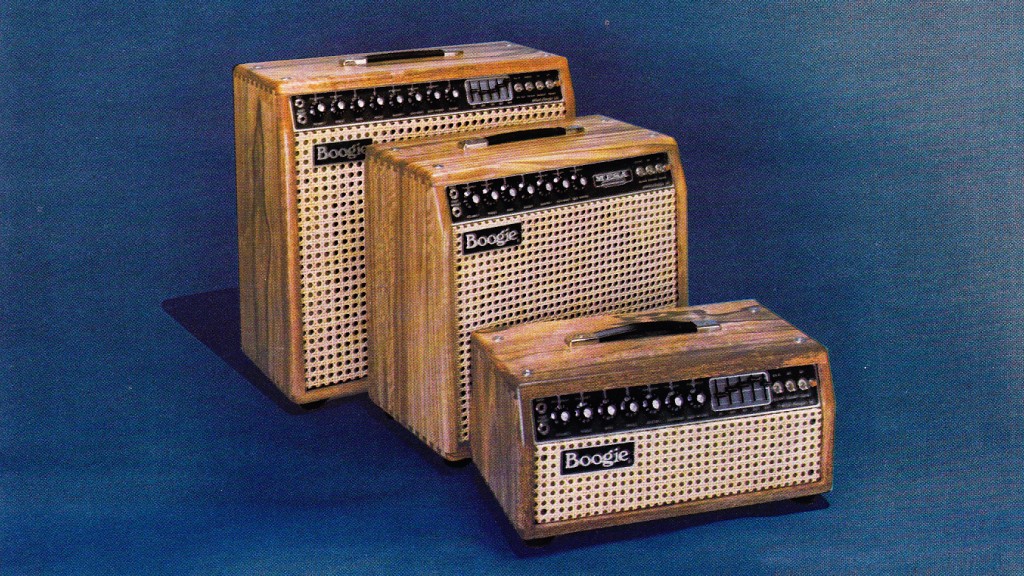 ‘Hey Jim, how about Denim for the background?’ ‘Sounds good Mike.’
‘Hey Jim, how about Denim for the background?’ ‘Sounds good Mike.’
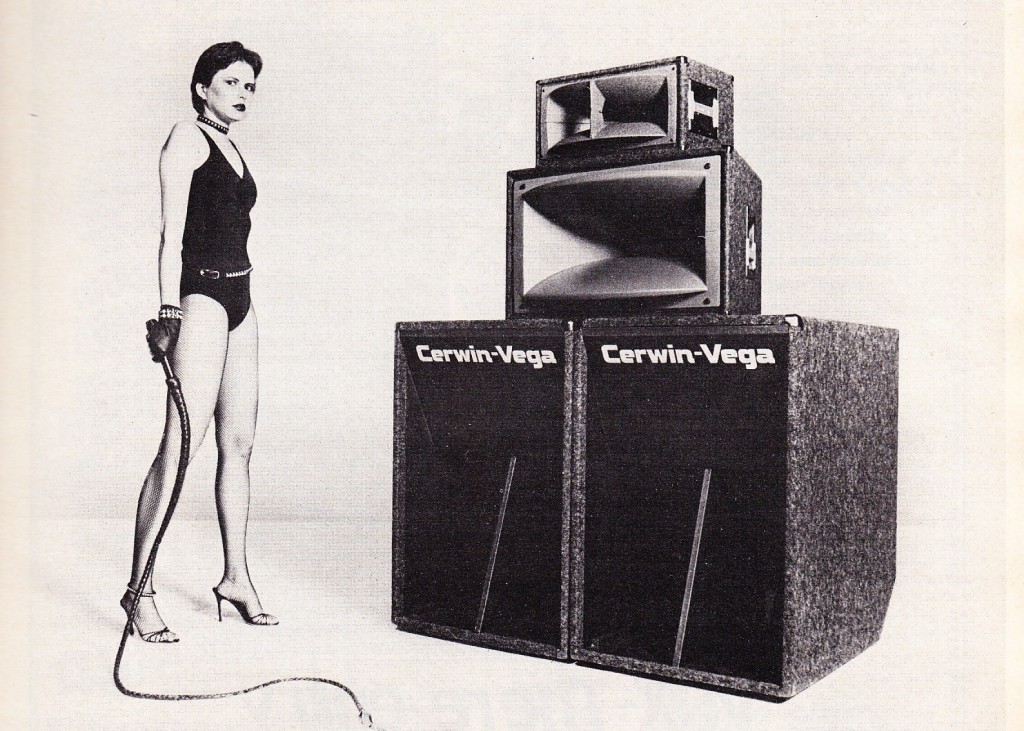 Is she intended as *a simile for the speakers? *a metaphor for the musical signal that will ‘exite’ these speakers? *a metonym for the community of all nightclub-speaker users? *a form of ‘impossible representation’ given that she seems quite unlikely to be a purchaser of this product, and the speakers are equally unlikely to be a ‘client’ of hers? Please use the COMMENTS section to offer your own analysis of the precise ‘non-literal meaning’ being used here.
Is she intended as *a simile for the speakers? *a metaphor for the musical signal that will ‘exite’ these speakers? *a metonym for the community of all nightclub-speaker users? *a form of ‘impossible representation’ given that she seems quite unlikely to be a purchaser of this product, and the speakers are equally unlikely to be a ‘client’ of hers? Please use the COMMENTS section to offer your own analysis of the precise ‘non-literal meaning’ being used here.
Top to bottom: Toa, Peavey, Mesa-Boogie, Cerwin Vega, all circa 1981.
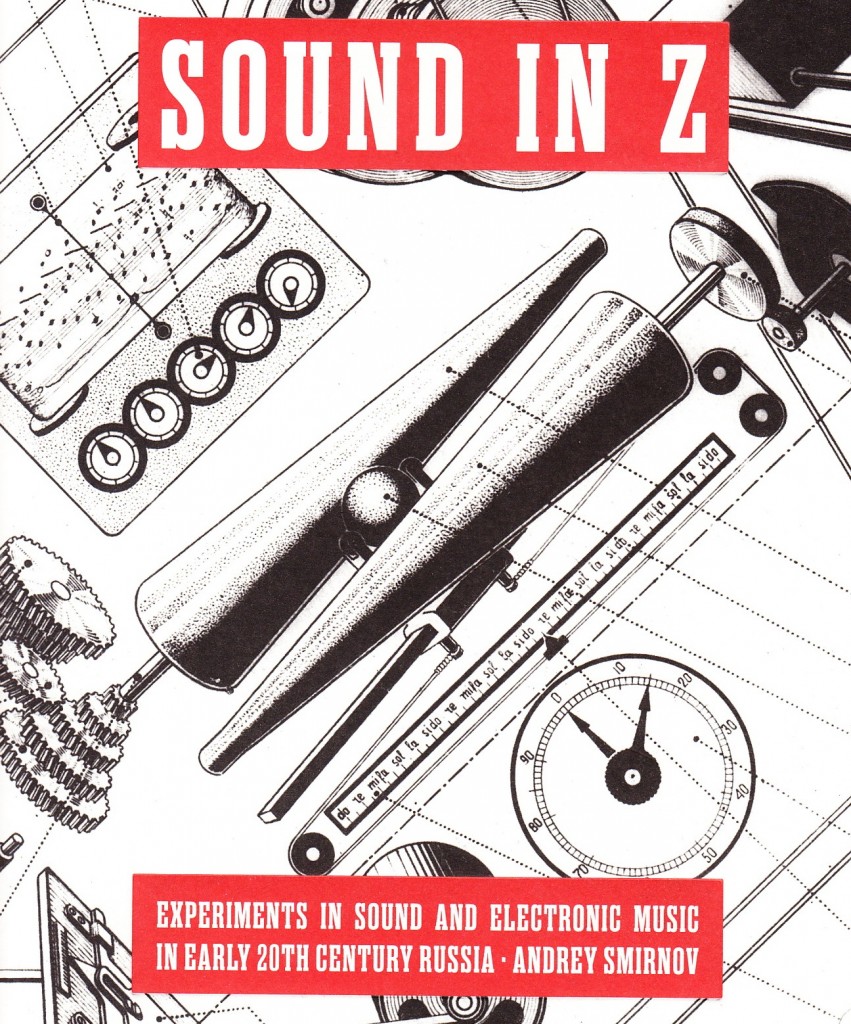 I was at the always-wonderful CCA recently looking for some new readings to bring to this semester’s Soundtrack course at SASD. So far I have only gotten through one of the volumes I purchased, but it is really something else and I’d like to recommend it unreservedly to all my readers. “Sound In Z: Experiments In Sound And Electronic Music In Early 20th Century Russia,” written by Andrey(i) Smirnov, was published this year by Koening Books, ISBN 987-3-86560-706-5. You can buy it here in the US and here in the UK.
I was at the always-wonderful CCA recently looking for some new readings to bring to this semester’s Soundtrack course at SASD. So far I have only gotten through one of the volumes I purchased, but it is really something else and I’d like to recommend it unreservedly to all my readers. “Sound In Z: Experiments In Sound And Electronic Music In Early 20th Century Russia,” written by Andrey(i) Smirnov, was published this year by Koening Books, ISBN 987-3-86560-706-5. You can buy it here in the US and here in the UK.
There is far too much revelatory information in this 261pp book for me to offer a thorough description, but suffice to say that between the 1918 Russian revolutions and the complete implementation of brutal Stalinist Totalitarianism in the mid 1930s there flourished a brief period of radical utopian thinking in the Soviet Union which expressed itself throughout the arts. Many of us are familiar with the new and highly influential Soviet graphic forms that emerged in this period; less documented are the incredible new directions in sound and audio that were undertaken. This book attempts to change that, with biographies of leading Soviet sound experimenters of the period, including Arseny Avraamov, who undertook intense experiments in graphically-drawn sound intended for playback via film-projector photocell.
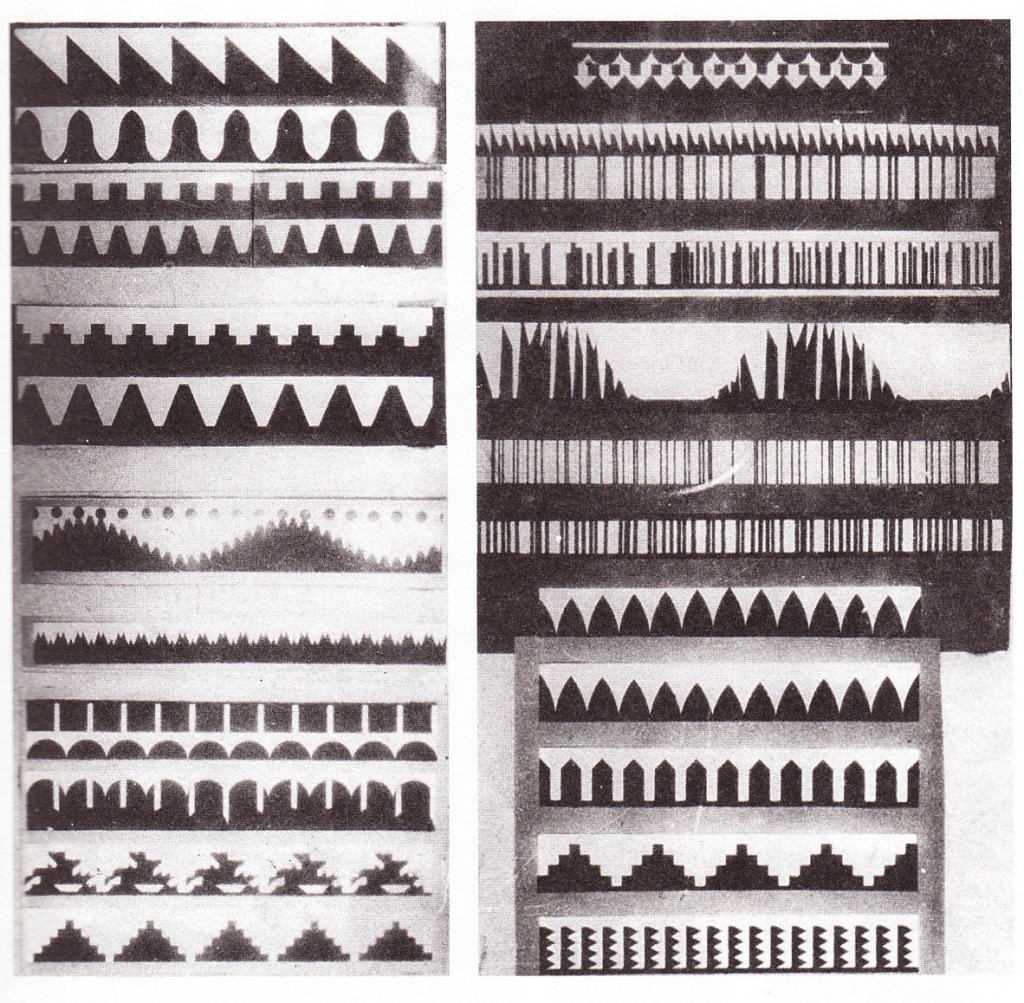 Evgeny Sholpo’s work is also covered in some detail, especially his Variophone series of…AAWs? Analog Audio Workstations? Essentially these were analog, graphically-interfaced additive synthesizers/sequencers… WHICH WERE MADE IN THE 1930s. Good lord. Here’s a clip:
Evgeny Sholpo’s work is also covered in some detail, especially his Variophone series of…AAWs? Analog Audio Workstations? Essentially these were analog, graphically-interfaced additive synthesizers/sequencers… WHICH WERE MADE IN THE 1930s. Good lord. Here’s a clip:
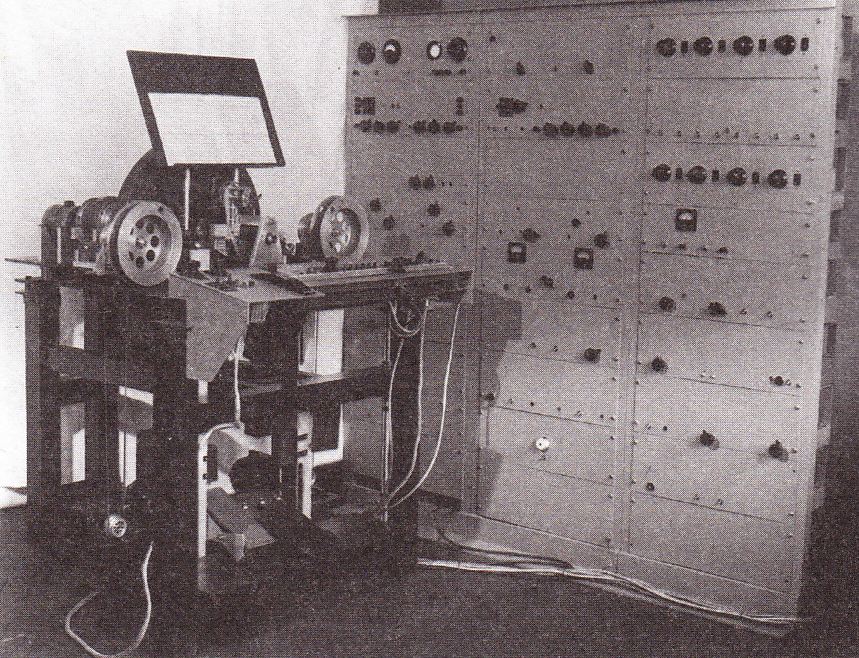 Above: an image of the final iteration of the Variophone c. 1949
Above: an image of the final iteration of the Variophone c. 1949
If the music itself sounds a bit regressive, this is due in large fact to the repressive political regime already in place by the early 1930s which sought to eliminate abstract and ‘avant garde’ artwork; many of these same composers and thinkers had been intensely involved with microtonal and ‘noise’ musics only a decade earlier; and many of these Soviet visionaries of the 1920s and 1930s were either executed or consigned to labor camps and/or tweedy backwaters as a direct result of their unconventional formal experiments.
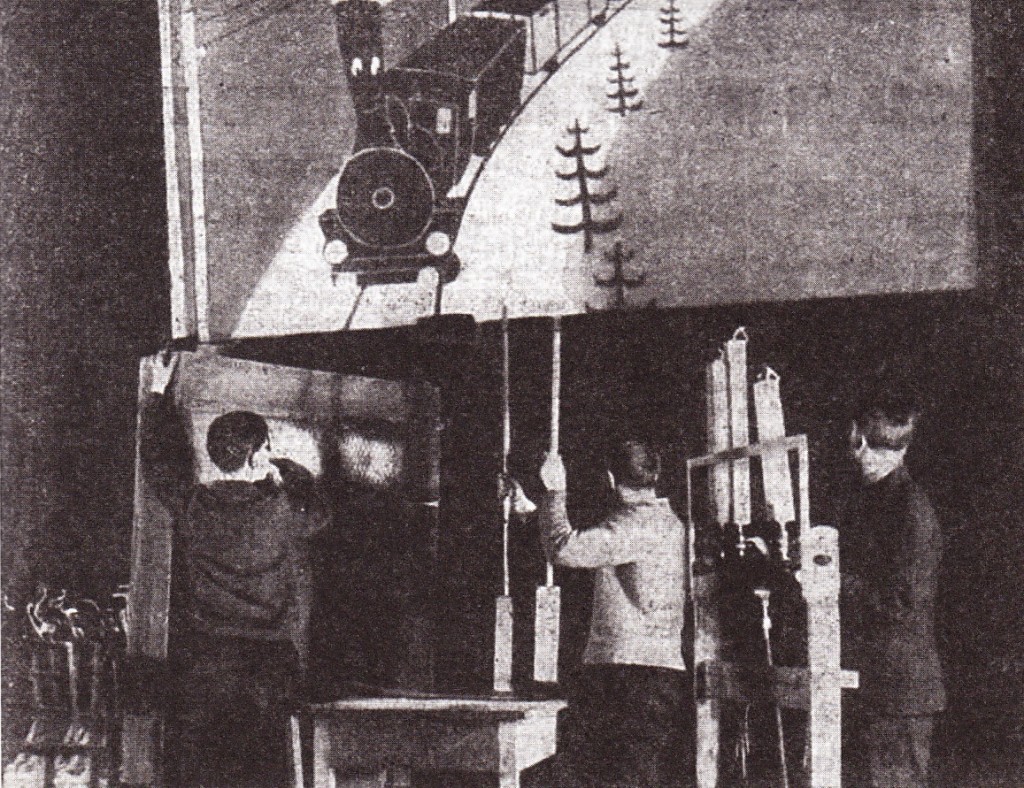 Above, ‘Shumoviks,’ or, roughly, sound-designers, perform some foley work as directed by Vladamir Popov, who composed sound-design for film with graphic renderings as depicted below:
Above, ‘Shumoviks,’ or, roughly, sound-designers, perform some foley work as directed by Vladamir Popov, who composed sound-design for film with graphic renderings as depicted below:
 There is just such a wealth of fascinating ideas and weird dead ends (often, quite literally dead-ends, as the work of many of these pioneers was ended by their execution or exile) explored in this book; really a new wonder on every page. If you were ever enthralled by the genius of Leon Theremin and his well-documented contributions to modern music and electronics, well guess what: there were dozens of other geniuses working alongside him, mining different but equally adventurous veins, and now their stories are finally being told in the English language. Had their work not been terminated and repressed by the terrible Stalinist state regime, we would likely have incredibly different audio-tools in our hands today. If you work in sound-design, audio software development, or use synthesizers in your musical work, you must read this book.
There is just such a wealth of fascinating ideas and weird dead ends (often, quite literally dead-ends, as the work of many of these pioneers was ended by their execution or exile) explored in this book; really a new wonder on every page. If you were ever enthralled by the genius of Leon Theremin and his well-documented contributions to modern music and electronics, well guess what: there were dozens of other geniuses working alongside him, mining different but equally adventurous veins, and now their stories are finally being told in the English language. Had their work not been terminated and repressed by the terrible Stalinist state regime, we would likely have incredibly different audio-tools in our hands today. If you work in sound-design, audio software development, or use synthesizers in your musical work, you must read this book.
All images in this article are scanned from the book reviewed here.
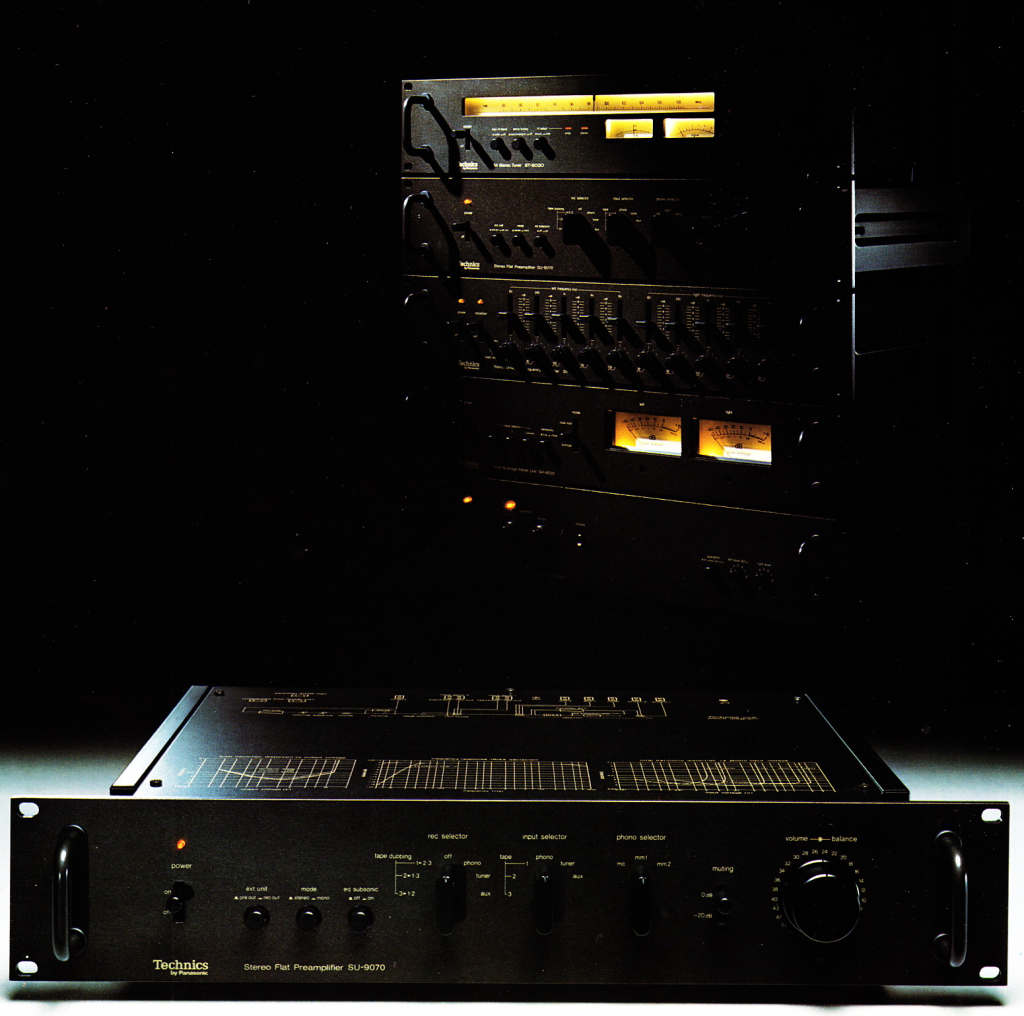 Download 18pp of catalogs for the circa 1978 Technics ‘professional series’ ST-9030 Tuner, SH-9010 equalizer, and SU-9070 Preamp:
Download 18pp of catalogs for the circa 1978 Technics ‘professional series’ ST-9030 Tuner, SH-9010 equalizer, and SU-9070 Preamp:
DOWNLOAD:Technics_Pro_1980
There was also an SH-9020 meter unit and an SE-9060 power amp, but I can’t seem to find those documents at present. Soon enough, i’m sure. So anyhow, the idea here was apparently to ‘separate the basic (receiver) into five components.’ Their words. Anyway, the EQ is pretty insane, it’s got way more control than any sane person would ever want. Here’s the whole kit+kaboodle for ya:
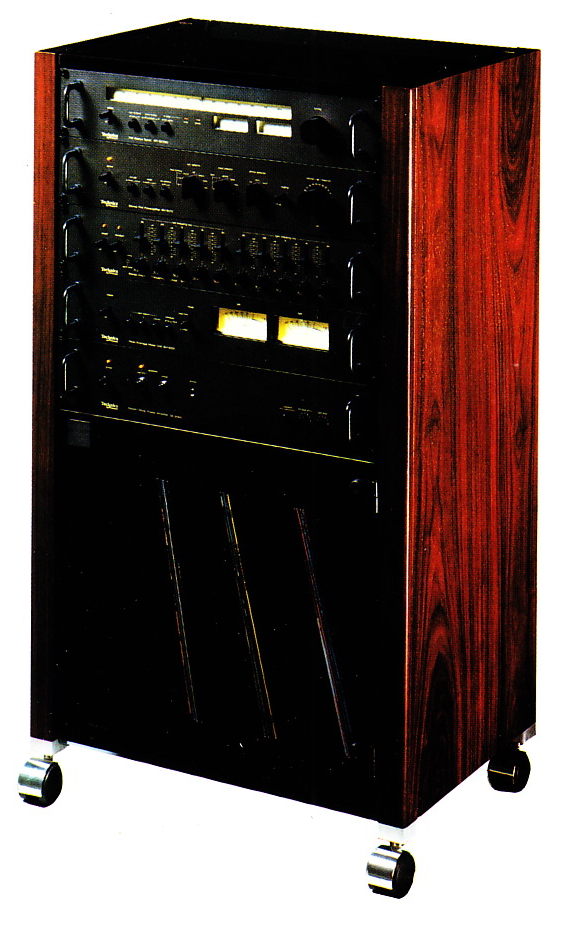




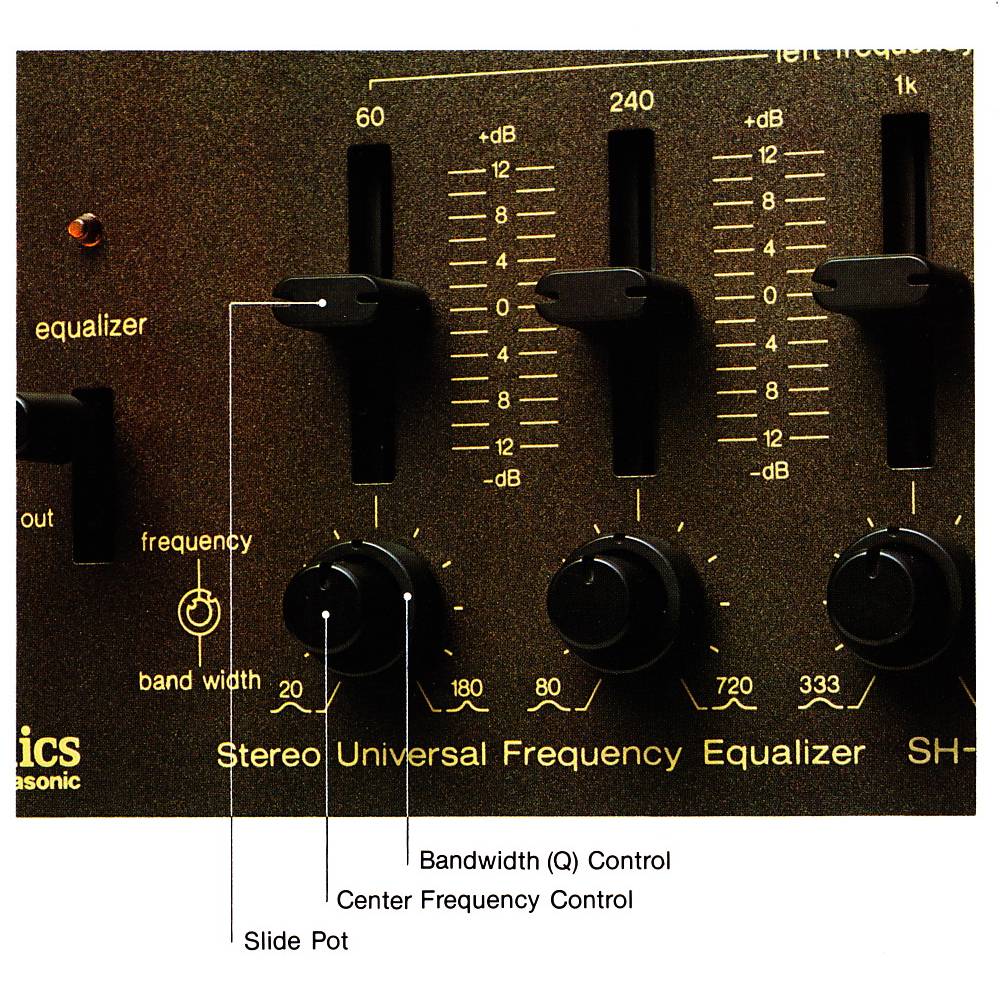
 OK honestly, i’d prolly wanna buy anything that was photographed in this manner. PREVIOUSLY ON PS DOT COM: the original period adverts for some of these same items. Aye yi yi. Click here for that…
OK honestly, i’d prolly wanna buy anything that was photographed in this manner. PREVIOUSLY ON PS DOT COM: the original period adverts for some of these same items. Aye yi yi. Click here for that…
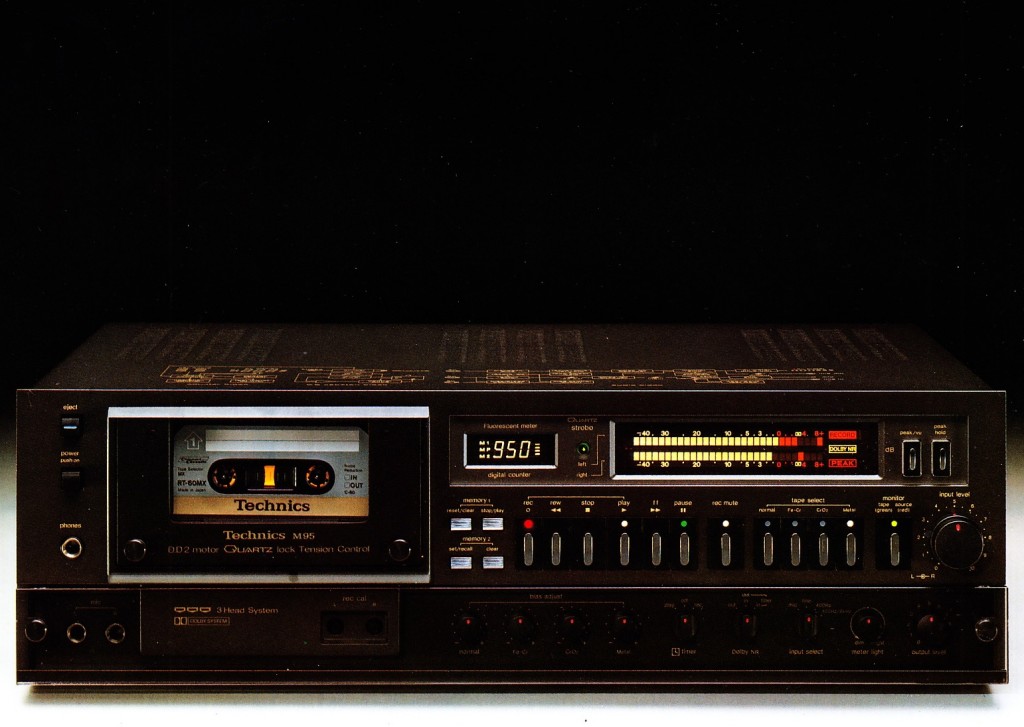 Download the 4pp catalog for Technics’ top-end tape deck of the late 70s, the RS-M95:
Download the 4pp catalog for Technics’ top-end tape deck of the late 70s, the RS-M95:
DOWNLOAD: Technics_M95
A few months back, I was sweatin the Technics RS-M85 of the same era; turns out there was an ever finer deck on offer. Man high-end tape decks were nuts back then. And the best part is that almost none of em work anymore!!!! Truly lost to time. Hey btw we have a really exciting cassette themed video dropping in a few weeks, keep ’em peeled…